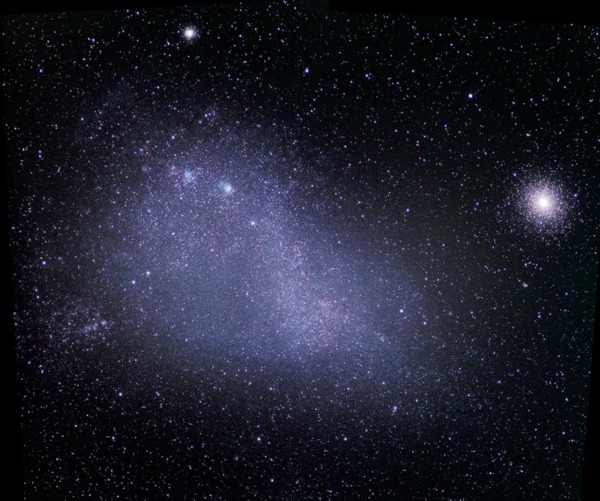 |
Catalogs
Cepheid Phys. Properties
Binary Cepheid Solutions
Projects
SB2 Cepheids
Classical Cepheids
Type II Cepheids
Papers
by category
by first author
by target
Visitors so far: 86086.

Relevant publication:
2014, ApJ, 780, 59 (← click to see the publication at ADS/arXiv)
We present a distance determination to the Small Magellanic Cloud (SMC) based on an analysis of four detached, long period, late type eclipsing binaries discovered by the OGLE Survey. The components of the binaries show negligible intrinsic variability. A consistent set of stellar parameters was derived with low statistical and systematic uncertainty. The absolute dimensions of the stars are calculated with a precision of better than 3\%. Atmospheric parameters are derived from analysis with the MOOG code.
 |
|---|
| Atmospheric parameters from MOOG analysis, with correct temperatures misprinted in ApJ paper. |
The surface brightness - infrared color relation was used to derive the distance to each binary. The four systems clump tightly around a distance modulus of (m-M)=18.99 with a dispersion of only 0.05 mag. They probably lie in a main body of the galaxy. Combining their distances with our previous published distance to the eclipsing binary OGLE SMC113.3 4007 we obtain a mean distance modulus to the SMC of 18.965 ± 0.025 (stat.) ± 0.048 (syst.) mag. This corresponds to a distance of 62.1 ± 1.9 kpc, where the error includes both uncertainties. The system OGLE SMC113.3 4007 lies in a foreground substructure of the SMC in so called Wing.
 |
|---|
| The distance estimates to four new eclipsing binaries in the SMC and the system SMC113.4 4007 published previously by our team. The continuous line is an unweighted mean distance from all five binaries and the dashed lines represent a 1-sigma range. The errorbars signify statistical uncertainties. |
Taking into account other recent published determinations of the SMC distance we calculated the distance modulus difference between the SMC and the LMC equal to 0.458 ± 0.068 mag. Finally we advocate distance modulus m-M=18.95 ± 0.07 as a new "canonical" value of the distance modulus to this galaxy, where given error is dominated by uncertainties of the galaxy structure, its shape and total line-of-sight geometrical depth.
 |
|---|
| The normal distributions of the relative distance moduli between Magellanic Clouds taken from recent literature including our result based on late type eclipsing binaries. The distribution of their sum is shown as points and it is fitted by a single normal distribution, plotted as the thick line and scaled down three times for clarity of the picture. |